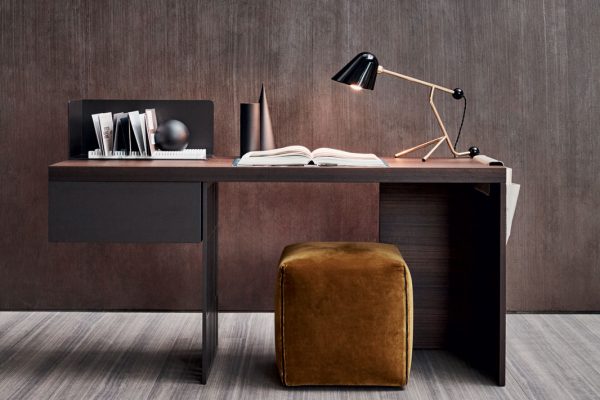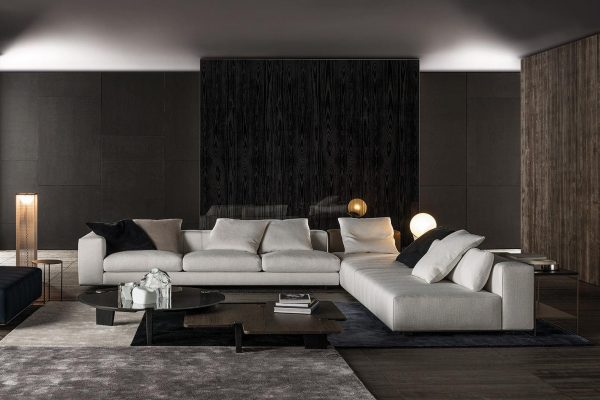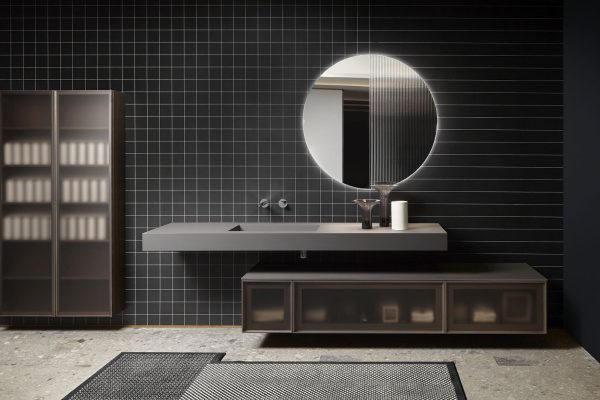Ligne Roset, French style between tradition and modernity since 1860
Refinement, contemporaneity, strong identity and obsessive attention to detail. A philosophy that has belonged to theFrench company Ligne Roset since 1860, an excellence in the transalpine market that has become a multinational company in a very short time, while maintaining a family business.
Founded in Montagnieu, in the French province of Ain, by Antoine Roset and his son Emile, founders of a small manufacturing business devoted to woodworking with a production of walking sticks, umbrellas, and chair frames, the company underwent a remarkable development with Jean Roset, the founder’s grandson, who, in 1950, at the end of World War II, diverted production to tables, chairs, and beds for schools, universities, hospitals, and nursing homes.
Here it is 10 years later, taking advantage of thecreative explosion of the late 1960s, that furniture is declined for the home furnishings market. The company, as we know it today, began to take shape in 1973, when the Ligne Roset brand name was made official, the manufacturing plant moved to Briors, where it is still based today, and Michel Ducaroy’s Togo sofa was unveiled, representing the French brand’s turning point.
To date, it can boast of being the only publisher, manufacturer and distributor of high-end made-in-France furniture, with two hundred single-brand showrooms and numerous retail stores located around the world. Distinguishing it in the market are collections of furniture and decorative accessories, lighting systems, carpets, fabrics and accessories characterized by refined and rigorous but also bold and ironic forms; a stylistic signature recognizable and pursued in the many collaborations activated with both established and emerging designers.
Ligne Roset promotes a holistic approach to sustainability, starting with the furniture design process and ending with the well-being of employees through low-impact, environmentally conscious production.
The Togo sofa, a style icon symbolizing informal home living
An innovative and democratic piece of furniture. These are the motivations that brought the Togo sofa designed by Michel Ducaroy the René – Gabriel award when it was first presented at the Salon des Arts ménagers at the Palais de la Défense in Paris.
A sofa that takes inspiration from the shape of a toothpaste tube rolled on itself and is also remembered as a “baby-looking” sofa with the wrinkles of a Shar-Pei dog. It is characterized as a light, comfortable and easily transportable piece of furniture, still considered the quintessential Ligne Roset sofa
More than fifty years later and with more than one million pieces sold in seventy-two countries, it is a furniture icon with a deconstructed shape, and represents a contemporary and informal way of home living, an ode to laziness that is renewed year after year with new upholstery and reinterpretations, including a version for children.
Last year, in 2020, Togo became a complete collection of polyurethane foam seating that complements the sofa with armchairs and two-seater sofas, thus reinterpreting Ducaroy’s design, in a modern key, in the light of a new structure that allows for production in which recycled and recyclable, non-toxic and low-emission materials are integrated.
Ruché, the curled sofa that combines the particular with the traditional
When the workings of clothing contaminate design, furniture with unique and timeless appeal is made. This happened for the Ruché pattern by designer Inga Sempé, which, taking its name from the gathered or pleated fabric that serves as a decoration on garments, combines the unusual and the traditional.
The special feature of this piece is its solid wood frame, and the great traditional element: quilting, the true heart of its savoir-faire. Its slender uprights and the undulations of its down combine to produce a harmonious union of strict straight lines and soft, welcoming curves. Slender and fine, Ruché is nevertheless soft and welcoming. It can also be added that the design of Ruché itself offers a collection of seating that combines comfort and compactness. Its modularity thus offers the double advantage of considerable comfort and the look of a real home sofa, taking it away from the “banquet” aspect. Its lower lines allow it to blend elegantly into all spaces, even the smallest.
Desdemone, the bed inspired by a seashell
Function and use. These are the concepts that designers Nasrallah & Horner have brought back in the Desdemone bed, a peculiar piece of furniture that almost resembles a cocoon: it brings protection and serenity, becoming the ideal refuge for a perfect night’s rest.
The padded headboard evokes a seashell: it is an invitation to read, watch TV or even write. The impression of continuity between the headboard and the base gives great visual lightness, even in the case of the high headboard version. A model that lends itself to a wide variety of uses, becoming the center of the living universe.
Juliette Coiffeuse, multitasking feminine and functional furniture
Romantic, modern and functional, Juliette is a coiffeuse designed by Evangelos Vasileiou for French company Ligne Roset. The warm, precious charm imparted by wood and the simplicity of the design make it an especially graceful and refined piece of furniture. Made of American blond walnut veneered MDF panels and a black lacquered steel base, it is complemented by a drawer and a second storage compartment closed by a flap door that conceals, on the inside, a maxi mirror for use in the open position. Opening with 2 gas springs.



